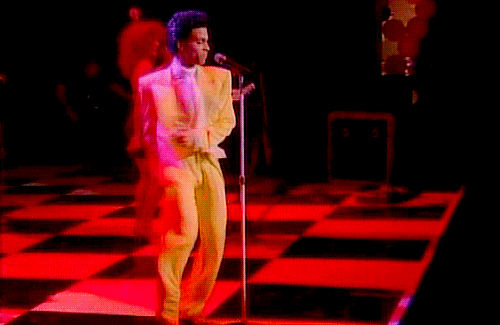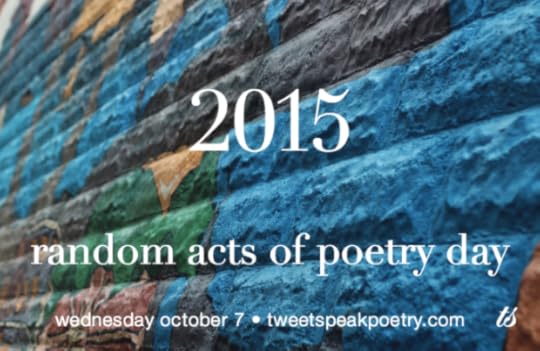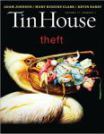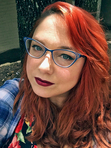E. Kristin Anderson's Blog, page 2
October 24, 2015
Book News on the Eve of the Launch for PRAY, PRAY, PRAY!
So I made this book called 17 DAYS and signed a deal with a publisher and then that deal went sour and 17 DAYS was homeless.
So I started sending it out again. And then I heard from ELJ Publications. And they were all, can we look at this again? And they did. And they liked it. And now 17 DAYS is no longer homeless.
It is also no longer coverless. Ariana D. Den Bleyker of ELJ fashioned this glorious cover for a book that should be heading our way very, very soon:

ELJ Publications, November 2015.
Thank you so much to the team at ELJ! I hope y’all enjoy this book when it hits shelves (and the Internet) later this fall.
Meanwhile, I hope to see some of you tomorrow at Malvern books for the launch of PRAY, PRAY, PRAY: Poems I wrote to Prince in the middle of the night.





October 20, 2015
PRAY, PRAY, PRAY (aka the Prince Chapbook) Is Finally Here!
Yep, you read that right. It’s release day for my latest chapbook, PRAY, PRAY, PRAY: Poems I wrote to Prince in the middle of the night!
I’m super pumped to have this book out in the world. When I started deliriously writing poems to Prince last summer, I thought maybe one or two would get picked up by a magazine. And I certainly didn’t anticipate writing a chapbook’s worth of work. But here it is, thanks to Porkbelly Press and my lovely editor (who is also the publisher and designer) Nicci Mechler.

Bundles of Prince books in Cincinnatti, waiting to get shipped to new homes. Thanks, Nicci!
And, because I can’t help but explode with wow, I found out a few weeks ago that one of the poems in the book, “Hiding is the only thing that matters this summer,” was nominated by Hermeneutic Chaos for the Pushcart Prize. Thank you so much to editor Shinjini Bhattacharjee! I couldn’t be more pleased.
Some of y’all have already received your early copies. Thank you for pre-ordering! There are raspberry beret minis and Princemarks going out with orders while supplies last. If you’d like a signed copy, you can order directly from me by emailing e.kristin.anderson@gmail.com or…..
YOU CAN COME TO MY PARTY! I’ll be reading and celebrating at Malvern Books on Sunday, October 25th at 4pm. There will be a bunch of other awesome readers with Prince poems joining me: Erika Jo Brown, M. Mack, Stacey Balkun, Liz Belile, Ava Love Hannah, BJ Love, and Nettie Reynolds! If I may borrow a turn of phrase from the Purple One, we’re going to have a funky good time.
Speaking of funky good time, Ms. Kepner’s class at Kealing Middle School got a sneak peak of PRAY, PRAY, PRAY last week. I got to share some of my favorite contemporary poetry with the students and to read some of my own work. Everyone got Princemarks and raspberry berets. Here’s our class picture:
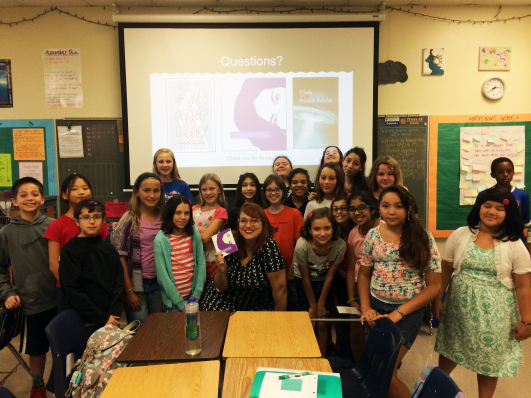
Ahhhh funnest 6th grade class ever!
So I hope to see you on Sunday. And if you can’t make it and want the book, order from Porkbelly Press or email me. The book is $7 + shipping I believe through Nov. 1st (or possibly sooner as Nicci and I have not achieved full mind meld yet) and then the price will go up to the full 9.50 + shipping. So order soon for a deal. Plus these little berets are going quickly!

Raspberry berets (the kind I make until my fingers get sore.)





October 7, 2015
Guest Post from L.L. Barkat: Random Acts of Poetry Day
“This one is my day,” said my 16-year-old daughter. She’s more into cosplay, steampunk, and photography than she is into poetry, which is fine by me, even if I do have it in mind to win the world’s heart with the power and beauty of verse.
As part of my role on the team at Tweetspeak Poetry, I spend a good deal of time considering how to reach this lofty goal—poetry to the world—or, as we’ve come to put it, Poetry for Life.
To that end, we sponsor four public days per year, from the serious to the mischievous: Poetry at Work Day, Poem on Your Pillow Day, Take Your Poet to Work Day, and Random Acts of Poetry Day.
As part of the fun, we offer free downloadable materials for libraries, teachers, hotels, workplaces, and anyone at all who might, like my daughter, suddenly see that poetry can appeal to a variety of people—some of whom will never love a sonnet or unlock the secrets of a ghazal.
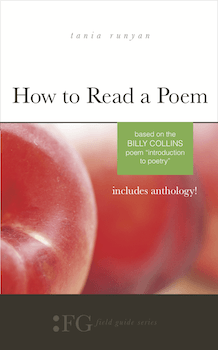
T.S. Poetry Press, January 2014.
For Random Acts of Poetry Day, which is a day devoted to…random acts of poetry, it was my poetry-doubtful daughter whose street photography ended up on the free poster and the ebooklet of random act ideas. This wasn’t planned. The rest of the day’s materials were kindly provided by photographer Michelle Ortega.
In the end, it seems fitting. A last-minute photo shoot in Indiana, a sudden decision to use one of the images from that spontaneous trip, and this image being from the daughter who’s declared Random Acts of Poetry Day as her day. For a planned public day, this all feels appropriately random. And we know we’ve reached at least one heart with the possibilities of poetry.
Celebrate, Wednesday, October 7!
Download a free Random Acts of Poetry Day Poster
Download a free ebooklet of random act ideas
Borrow beautiful art to share the day on your website or social media
Share your photos from the day with us on Twitter or Instagram, using the hashtag #raopoetryday and we might feature you in the wrap-up post.
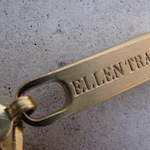
L.L. Barkat.
L.L. Barkat is the founder of T.S. Poetry Press, home of an Oprah-selected title; Managing Editor of Tweetspeak Poetry (which convinced Microsoft and Ellen DeGeneres to write poems); writer at Huffington Post Books blog; and the author of six books spanning the genres of memoir, poetry, and fiction. Her secret stash always contains chocolate or maple bacon potato chips. She accepts loose tea as bribes.





October 4, 2015
What Is a Literary Journal? And How Do I Get Into One?
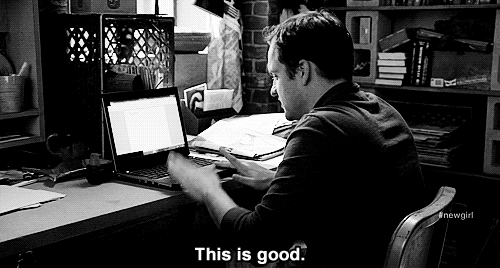
There are lots of magazines out there. Ones you might be more familiar with are the ones you can buy at the grocery store check-out aisle—Elle, Vogue, People, Cooking Light. You know, that stuff. But most of these magazines publish work that is along the lines of journalism, or occasionally creative non fiction (CNF) and criticism (reviews). Magazines you might not be as familiar with are literary journals. You probably won’t find these at the grocery store. You might, but it’s probably just The New Yorker. The Paris Review if you’re at some schmancy place. These are some of the oldest and most celebrated literary magazines in the world, and they publish creative nonfiction, criticism, fiction, poetry, and other in-between-y type pieces. But they’re just drops in the ocean of the lit mag establishment.
So what is a literary journal?
Let’s go back a bit. Literary journals — or literary magazines — have been around for quite a while. The first literary magazine on record was a French periodical called Nouvelles de la Republique des Lettres, established in 1684. Of course, we’ve done a lot since then. The oldest literary magazine in the United States is the North American Review (formerly The Monthly Anthology), which began publication in 1803 (though the Yale Review, begun in 1819, is the oldest literary magazine with continuous publication, as NAR suspended publication during WWII). And the oldest magazine dedicated to poetry is thought to be Poet Lore, which began publication in 1899.
History! So much of it. We could be here all day — the old establishment of literary magazines in the US, Canada, UK, and around the world is vast and long. So let’s move on and see what else there is to know about literary journals.


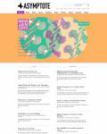


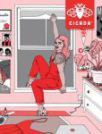
What are the different kinds of literary journals?
This is where it might seem to get trickier, but if you’re doing a little bit of homework, it should be easy to suss out. Let’s start with independent lit mags versus university journals. Many journals—like New England Review at Middlebury College, the aforementioned Yale Review, the Southwest Review run by Southern Methodist University, Post Road at Boston College (and, for funsies, both James Franco and I have been in this mag, in separate issues)—are affiliated with colleges and universities. Often these magazines are funded by the college (or have some funding from the college) and are run by a combination of students, faculty, and alumni volunteers. Most of these journals will have a description of how they run their magazine and who edits it somewhere on their website. Independent magazines, like The Paris Review, Tin House, 32 Poems (and many others) have no university affiliation or funding.
Of course, there are magazines for every type of writing and every genre and market imaginable. From loose genre/market rules (like Asimov’s and Shimmer, which publish sci fi and fantasy, Ellery Queen Mystery Magazine which focuses on mystery/noir, and Cicada which publishes work for young adult audiences) to more specific guidelines and missions (Bellevue Literary Journal only publishes work that has to do with health and medicine, Frogpond only publishes haiku, or Asymptote that only publishes work in or about translation) and there are magazines that are for specific regional (Midwestern Gothic) or ethnic (Callaloo) or gender identities (Room), that are written for and by the LGBTQ community (Assaracus, Adrienne), for work by people in certain age groups (teens or writers over 50, for example).
There are magazines that only publish poetry (Southern Poetry Review, Magma Poetry), only publish fiction (Zoetrope: All-Story, One Story) only publish reviews and interviews (Rain Taxi), etc., etc. There are newer journals (Sugared Water, Whale Road Review, Ugly Duckling Presse’s 6×6, (parenthetical), The James Franco Review (for real!), Hermeneutic Chaos), older, established journals (Ambit, The Sewanee Review, AGNI, Poetry London, Poetry New Zealand, Salamander) online journals (The Rain, Party, & Disaster Society, Noble / Gas Qtrly, Cordite, ) and print-only journals (Poetry, Going Down Swinging, jubilat) as well as magazines who publish content both in print and online (Juked, Guernica, [PANK], Barrelhouse). There are even mags taking advantage of new technology for e-readers and other devices, like NonBinary Review. (I’m partial to them. Totally nepotism there. But they’re truly great.)
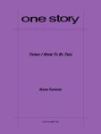

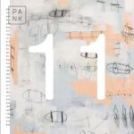
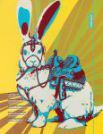


Do I have to be from the US to submit
to a US-based magazine?
Most magazines do not care where you are from or where you currently live. What matters is the writing, and whether it follows the guidelines and fits their magazine’s aesthetic. Some journals do have regional affiliations and publish only work from writers of a certain background or from a certain country, state, region, etc. Some magazines have funding from grants that require them to publish a certain amount of literature from authors in their country (The UK, Canada, and Australia all have journals like this, so it can be harder for an American author to get into their magazines if they have certain types of funding.) But this will always be in the magazine’s guidelines. If they are only for work by Californians, and you don’t live in or haven’t lived in California, well, that magazine isn’t for you. But there are lots of other magazines.
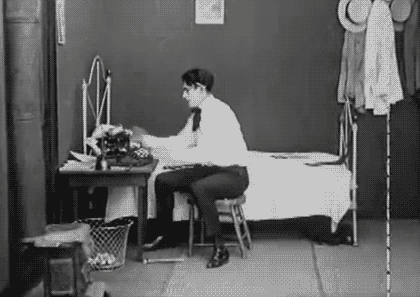
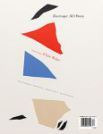




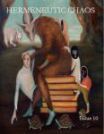
How do I submit work?
Read. The. Guidelines.
Every magazine has the guidelines on their website and possibly in the issues of their magazines. I’d encourage you to familiarize yourself with magazines before you submit, research what markets are best for you and your writing, and (of course) only send out your most polished work. If you can’t afford to buy issues, many libraries have subscriptions to literary magazines, and most magazines have at least SOME online content that you can check out.
Follow the guidelines to a T, even if they seem silly to you. Not following the guidelines can get your submission tossed out before it’s even read. Some magazines will want a cover letter, which is very much like a cover letter you’d write applying for a job — greeting, what you’re submitting, little bio (listing a few publications if any) and a cordial sign-off. Some magazines don’t want a cover letter, want a third person bio submitted separately, or read blind and require you to send a separate cover page so that they can read your work (and the work of others) without bias.
You may encounter reading fees. These usually are $5 and under, most often around $3. This is typical now, even though even five or six years ago it was considered taboo. There are sometimes ways to get around reading feed if you can’t afford them. You could skip submitting to these journals altogether. Some magazines will waive the fee for students or subscribers. And some magazines will allow postal submissions fee-free.
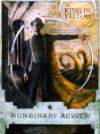
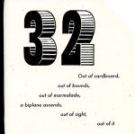

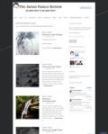


Where do I even get started?
There are tons of fantastic resources out there for writers new and established looking for places to send their work. My favorite is duotrope, which helps you keep track of deadlines, let’s you search for magazines using lots of different criteria, and also helps you keep track of your submissions. It costs $5 per month to use or $50 per year. You can also keep an eye on NewPages.com which posts regular calls for submissions, writing contests, and reviews of literary magazines. If you’re a more paper book analog type, you can always check out Writer’s Market.
There are are also some blogs I live that regularly post opportunities, like those of authors Trish Hopkinson and Nancy Chen Long. And, of course, there’s always The Review Review, which, yes, reviews literary journals.
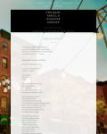
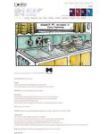



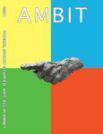
What if I get rejected?
You will. I got a rejection from North American Reviewthe night I wrote this piece. And one from FIELD the day before. And I personally was probably sending work out for over a year before I got my first acceptance. Everyone’s writing journey is different, but no matter how “big” you get or how new you are, there will be more rejections than acceptances. If you get feedback, take it with grace. If you don’t, and a piece keeps getting rejected, get peer feedback and revise then send it back out. The key here is to not let rejection get you down.
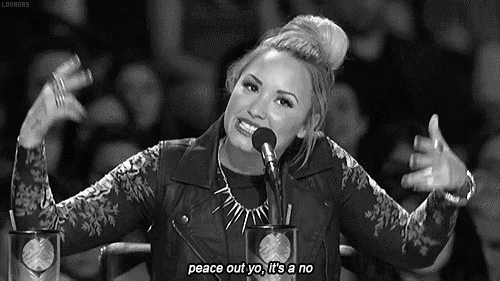





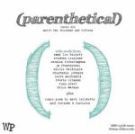
In summary…
There’s a lit mag for everything. And if you’re ready to start getting your work out to mags, do your homework and send that stuff out. It might take a while, but good writing gets published. So start reading some lit mags. I’ve highlighted some gems here in this article. I hope you enjoy them!

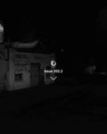



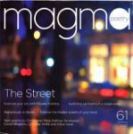





October 1, 2015
New Sales! New Magazines! Happy Fall!
Hi guys! I hope you loved Banned Books Month as much as I did! Holy wow there were so many fabulous guest posts. And I learned a lot, even as someone who considers herself pretty knowledgeable about banned books and censorship.
Speaking of which, I had a really great time at this Banned Books Read-Out at Malvern Books, where I read a scandalous section of Deenie by Judy Blume. Here’s a group photo courtesy of Stephanie Kipp McLain:
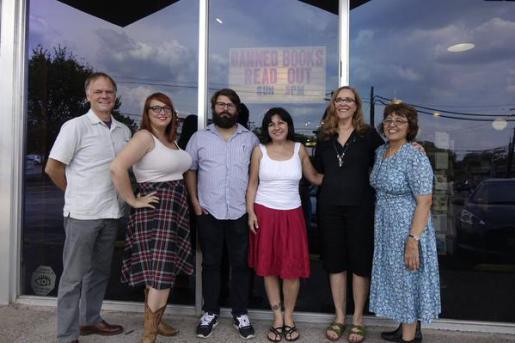
L-R: Mark Smith, Me, Andrew Hilbert, Tish Hinojosa, Sarah Bird, and Loriene Roy.
And here’s me, just, you know, reading some Judy:
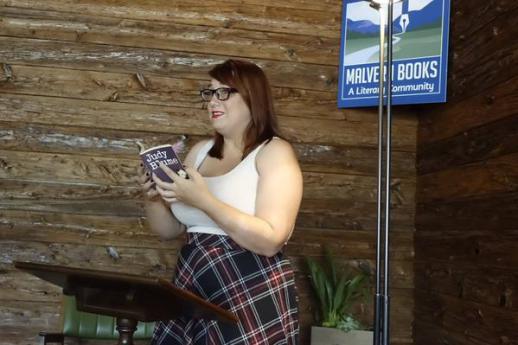
Photo by Stephanie Kipp McLain.
Woo banned books! The Read-Out was hosted by Malvern Books and Loriene Roy and was a fundraiser for the Freedom To Read Foundation. I’m so pleased to have been able to read alongside such wonderful writers and advocates of intellectual freedom. Thank you!
So while I was letting all these awesome guest posters take over my blog, a LOT of stuff happened. The biggest news miiiiight be the cover reveal for my forthcoming chapbook PRAY, PRAY, PRAY: Poems I wrote to Prince in the middle of the night:

Front and back cover of PRAY, PRAY, PRAY. Art by Nicci Mechler.
You can preorder the book from Porkbelly Press now! Click on the cover or follow this link to the Porkbelly Etsy page and reserve your copy. All preorders will come with some swag. You know, tiny raspberry beret clips and bookmarks. (Or as Nicci and I like to call them, princemarks.) If you’re in Austin or the surrounding area or you just want to come hang out in Austin, we are launching PRAY, PRAY, PRAY at Malvern Books on October 25th! I’ll be joined by several other poets with their own Prince poems. For more info, visit the event page either at Malvern’s website or on Facebook. Hope to see you there! Bring all your friends!
So as if I couldn’t be more pumped, I also somehow managed to sell two more chapbooks in September. Seriously. I can’t even.
My chapbook FIRE IN THE SKY collects three long poems created by scrambling lyrics from Lana Del Rey albums and then erasuring the scrambled texts. Warning: this book discusses sexy things and has a lot of swear words. So it’s definitely not intended for a YA or children’s audience. BUT. I am very excited. Grey Book Press will be publishing FIRE IN THE SKY in early 2016. And I can’t wait to share it with y’all!
My second chapbook sale of September is SHE WITNESSES, which collects selected poems from Found Poetry Review‘s PoMoSco project, including three pieces from the AWP JamPoRee. So…there are a couple of Prince poems here. Because a) Prince and b) AWP was in Minneapolis. SHE WITNESSES will be coming out with dancing girl press in May or June of 2016. I couldn’t be more thrilled to work with dgp!
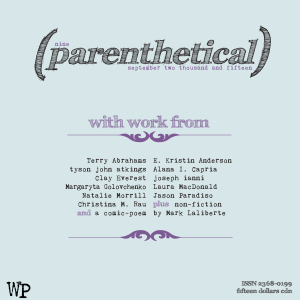
Parenthetical Issue 9, September 2015.
Meanwhile, I published poems in the print journals Room and (parenthetical) in September, which you can buy by clicking the links. (You can also read (parenthetical online for free.)
I also had several pieces in the following online journals:
The Rain, Party, & Disaster Society: “Do Liberate” and “Because it was the holy night”
The Journal of Compressed Creative Arts: “Use the Narrow Edge”
Abyss & Apex: “I Love All the Space Photos” and “Do not forsake”
So. I think that’s all the news. If you needed an extra news, there’s a Goodreads Giveaway going on for review copies of PRAY, PRAY, PRAY. Go here to enter!
Thanks for reading, y’all. I’m sure you’ll hear from me soon. I have things to say.





September 29, 2015
Banned Books Month Guest Post from Bridget Birdsall: Blessed are the Authors Whose Books are Banned!
Coincidently, while waiting for a backordered copy of the first book banned in New Zealand in over twenty years, I was asked to write about censorship. A subject that inflames my own passion to protect the freedom of expression for all, and something I’ve experienced on a more subtle scale since the publication of DOUBLE EXPOSURE.
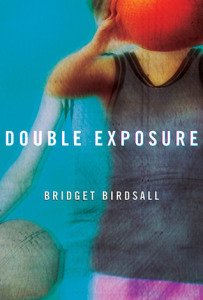
Sky Pony Press, November 2014.
Fortunately, Ted Dawe’s book INTO THE RIVER seems to be proving that even oceans away from my Midwestern domicile overt censorship, such as banning a book, even for the “interim,” may be as much a blessing as a curse.
Especially when public outcry brings the censors to their senses.
Moreover, if I’ve learned one thing as a writer over these past twenty years, it’s that readers’ love banned books, especially young readers. When I was a teen, I did. Even today, overtly banning a book makes me want to run out and read it, right away!
How about you?
Educators, librarians and other writers predicted that when DOUBLE EXPOSURE “came out” in the world, there would be those who would either love it or shun it. This has proven to be true, yet completely subjective and unpredictable.
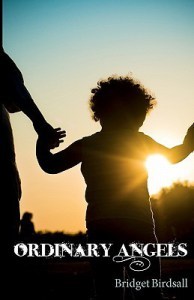
Bridget Birdsall, January 2011.
I’ve had Junior High School educator’s order dozens of copies and invite me to speak at their schools. I’ve had shy seventh graders, including many who identify at LGBTQ, thank me for writing the book. Recently I learned that Mount Mary University students are required to read it for their graduate level novel class, and the book has been vetted with major recognition and awards. (*List below)Yet, at the same time, several teacher and librarian colleagues told me their high school administrators had quietly restricted the book’s access due to its “mature content.”
ORDINARY ANGELS —A story of survival, hope, and the enduring bond of siblings, even beyond death.
DOUBLE EXPOSURE —A story of an Intersex teen athlete, and standing in the power of one’s personhood.
IPPY Gold Medal Winner
Toffee / Wright Children’s Literature Award Winner
Golden Crown Literary Association “Goldie” Award Winner
Lambda Literary Award Finalist
Foreword Reviews INDIEFAB Silver Award Winner
Publisher’s Weekly list of top anti-bully books
Teen Choice & UW Big Read Nominations
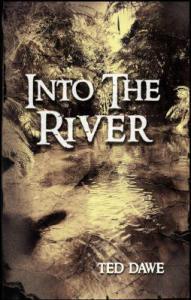
Random House New Zealand, October 2013.
Concerns included its use of medically explicit terms for sexual organs, and it’s exploration of complicated social and gender issues, which “some teens might not be ready for.” One of these schools had been dealing with bullying issues and already experienced the suicide of a student who identified as transgender within the last year.
Unfortunately, less media-driven forms of censoring a book are generally far more effective than blatantly banning the book. Which is what happened with INTO THE RIVER.
Mr. Dawe, who teaches English in a New Zealand high school, says he wrote the book with the hope of reaching teenage readers, particularly boys, who generally had more interest in video games than literature. He also wanted to tackle the topic of bullying, which he described as a “social ill.”
Despite being awarded the prestigious 2013 New Zealand Post Children’s Book Award, receiving no prior complaints and being approved by New Zealand’s Film and Literature Board of Review (FLBR) for older teen readers, a conservative group known as Family First filed a complaint citing concerns about sexually explicit content, drug use and language.
Check out similar to challenges and concerns received by the American Library Association’s Office of Intellectual Freedom. (*See table of 2014 challenged books)
INTO THE RIVER was subsequently banned from classrooms, books stores and libraries. Anyone caught distributing or exhibiting the books could face heavy fines, some up to the equivalent of $10,000. Mr. Dawe may have been frustrated and dismayed at this initial turn of events, but as soon as the word got out, the tide began to turn and today, author Ted Dawe has cause for celebration
After much debate and legal wrangling the restriction was lifted on September14, 2015.
New Zealand’s Classification Office lifted the restriction because they determined that it “cannot sit comfortably with the right to freedom of expression” and they went on to explain that “the suitability of the publication for young persons can best be determined by libraries, schools and parents.” (Read the full review of the Censors decision here)
In my opinion, Mr. Dawe’s hopes for the book have come to fruition. The banning of INTO THE RIVER has captured international attention, which I predict will help his book find those hard to reach young men in New Zealand, and elsewhere around the world. Not to mention those of us of all ages and genders who still love to read banned books, whomever the protagonist may be.
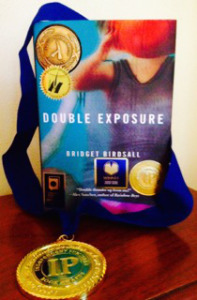
DOUBLE EXPOSURE and its multiple awards!
Thank you, Ted Dawe, for helping a new generation of readers and reminding the world that it critical for us to provide safe spaces for young people to explore and reflect on issues of race, culture, class, sexual orientation, identity, and all forms of bullying, discrimination and harassment. Even on the sad realities of drug or alcohol abuse.
The gift of good literature is that it helps us all become a little more human. It creates an opportunity and provides a safe place where we can learn a little bit more about whom we are, who we want to be, perhaps even who we hope to become.
For those tempted to censor books for young readers, especially those educators still concerned about DOUBLE EXPOSURE‘s(or any other authors’ book) suitability in your classrooms, I ask that you to please talk to your librarians, teachers and most importantly, your students!
Listen to what they have to say. What they want to read. What is relevant in their lives, and try as much as you can, to refrain from making the very decisions that good literature will make them better qualified to make on their own. If you are tempted to shun or censor anyone’s book, please do it all the way, bless it by banning it.
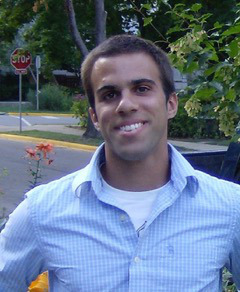
Bridget’s son, Quinn.
(Side bar from son Quinn, a teen who was introduced to good literature and today, at 25, still an avid reader…)
*The top ten most frequently challenged books of 2014 are:
1) THE ABSOLUTELY TRUE DIARY OF A PART-TIME INDIAN, by Sherman Alexie
Reasons: anti-family, cultural insensitivity, drugs/alcohol/smoking, gambling, offensive language, sex education, sexually explicit, unsuited for age group, violence. Additional reasons: “depictions of bullying”
2) PERSEPOLIS, by Marjane Satrapi
Reasons: gambling, offensive language, political viewpoint. Additional reasons: “politically, racially, and socially offensive,” “graphic depictions”
3) AND TANGO MAKES THREE, Justin Richardson and Peter Parnell
Reasons: Anti-family, homosexuality, political viewpoint, religious viewpoint, unsuited for age group. Additional reasons: “promotes the homosexual agenda”
4) THE BLUEST EYE, by Toni Morrison
Reasons: Sexually explicit, unsuited for age group. Additional reasons: “contains controversial issues”
5) IT’S PERFECTLY NORMAL, by Robie Harris
Reasons: Nudity, sex education, sexually explicit, unsuited to age group. Additional reasons: “alleges it child pornography”
6) SAGA, by Brian Vaughan and Fiona Staples
Reasons: Anti-Family, nudity, offensive language, sexually explicit, and unsuited for age group. Additional reasons:
7) THE KITE RUNNER, by Khaled Hosseini
Reasons: Offensive language, unsuited to age group, violence
8) THE PERKS OF BEING A WALLFLOWER, by Stephen Chbosky
Reasons: drugs/alcohol/smoking, homosexuality, offensive language, sexually explicit, unsuited for age group. Additional reasons: “date rape and masturbation”
9) A STOLEN LIFE, by Jaycee Dugard
Reasons: drugs/alcohol/smoking, offensive language, sexually explicit, and unsuited for age group
10) DRAMA, by Raina Telgemeier
Reasons: sexually explicit
(Out of 311 challenges as recorded by the Office for Intellectual Freedom)
For more information on this list and banned books, read this article on ALA’s Banned Books Week Website.
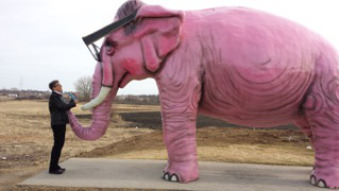
Bridget Birdsall (with the proverbial elephant in the room).
Bridget Birdsall is an author, artist, educator, writing coach, creativity consultant and an inspirational speaker. Despite dyslexic challenges, Bridget made a midlife decision to pursue her passion to write books that touch hearts, especially young peoples’. She earned her MFA in Writing for Children and Young Adults from Vermont College and now teaches creative, contemplative, and business writing skills throughout the Midwest. Bridget is a warm, engaging, dynamic speaker who inspires others to ignite their own unique inner spark, tap into their own creative power, stand up to bullies in every form and share their stories with the world. Bridget is the recipient of numerous awards and fellowships. She resides in Madison, Wisconsin, with her partner, Roseann Sheridan and their dog Sophie. Bridget is known as a writer willing to tackle tough topics in literature and in life. Learn more at: bridgetbirdsall.com





September 28, 2015
Banned Books Month Guest Post from Tom Butler-Bowdon: Running from the State
Alexandr Solzhenitsyn played with his life in writing a book that revealed the horrors of the Soviet Gulag.
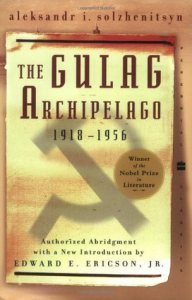
Harper Perennial Modern Classics, Reprint Edition, February 2002.
In the blaze of publicity that came with the Nuremberg Trials after World War Two, the full horror of Nazi atrocities was revealed. Stalinist Russia, in contrast, seemed like a much more forgiving regime, and many on the Left in the West still thought that communism was the future.
Yet behind the showreels of happy peasants on their collective farms and joyous factory workers was the reality of mass displacement, starvation and injustice on a scale that not even Hitler could have engineered.
THE GULAG ARCHIPELAGO is Solzhenitsyn’s monument to the millions tortured and murdered in Soviet Russia between the Bolshevik Revolution and the 1950s. He began writing it in 1958, three years after finishing an eight-year sentence in the Gulag labor camps.
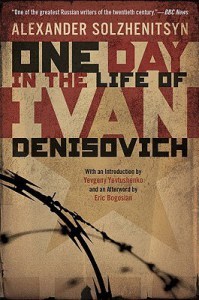
NAL, Reprint Edition, August 2009.
Just after finishing his sentence, Solzhenitsyn was pronounced ‘Exile for Life’ and sent to Kok-Terek in southern Kazakhstan for three years where he taught in a primary school, and was able to write secretly. In 1961, after Khrushchev’s speech denouncing Stalin had circulated in Russia, he dared to seek publication of his novel ONE DAY IN THE LIFE OF IVAN DENISOVICH, a fictional rendering of his time in the Ekibastuz labor camp. It brought him acclaim, but as he became more outspoken about censorship his novels CANCER WARD and THE FIRST CIRCLE (both 1968) were banned. He was expelled from the Soviet Writers’ Union, but in 1970 was awarded the Nobel Prize for Literature; he did not attend the ceremony for fear of not being allowed back into the USSR.
After spending ten years on the manuscript of THE GULAG ARCHIPELAGO it was smuggled out of the Soviet Union on mimeograph, and then published in France in 1973 and the United States and Britain in 1974.
In 1974 Solzhenitsyn was arrested, interrogated by the KGB and charged with treason. He was deported to Germany and spent time in Zurich before settling in Cavendish, Vermont.
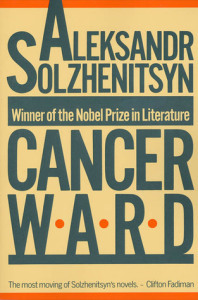
Farrar, Straus and Giroux, Reissue Edition, November 1991.
When published in America, THE GULAG ARCHIPELAGO was an instant bestseller, helped by the fact that that Solzhenitsyn had been expelled from the Soviet Union and was now living on US soil. To Americans he was living proof of the brutality and Orwellian nature of the Soviet regime.
Isaiah Berlin commented that “Until GULAG, Communists and their allies had persuaded their followers that denunciations of the Soviet regime were largely bourgeois propaganda.” Literally a book that changed minds and changed the world, its existence made it impossible for the USSR to claim moral superiority over capitalism and democracy. Doris Lessing said that “Its importance can hardly be exaggerated. It helped bring down an empire”.
GULAG is based on Solzhenitsyn’s recollections and notes along with reports, letters and reminiscences from 227 witnesses. Yet even as the book was published he declined to list their names. After all, in 1974 Soviet Russia still seemed to be going strong; it was a decade before Gorbachev’s glasnost (‘openness’) and perestroika (‘restructuring’) reforms that would result in the breakup of the Soviet Union.
Solzhenitsyn never imagined that he would get his account of the Gulag published in his lifetime, even less that he would appear on the cover of Time magazine and would win the Nobel Prize for Literature. Yet he was never complacent, for unless each generation learned about the horrors of regimes like Stalin’s, he believed, history was doomed to repeat itself.
After Solzhenitsyn’s book was published in the West it was circulated illegally in the Soviet Union as a samizdat (self-published) text, possession of which could put the owner in prison. It was only with the increasing freedoms allowed under Gorbachev that a third of the book was finally published, over three issues in 1989, in the Russian literary journal Novy Mir.
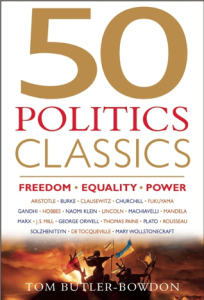
Nicholas Brealey Publishing, September 2015.
Following the dissolution of the Soviet UnionTHE GULAG ARCHIPELAGO was finally published as a book in its entirety. Solzhenitsyn, who died in 2008, would have been pleased that since 2009 it has been included on core reading lists in Russian high schools.
THE GULAG ARCHIPELAGO covers three volumes and 1800 pages, but if you don’t have the time to devote to the whole work simply read Volume 1, or the excellent abridgement by Edward Ericson (470 pages) which still gives you plenty of details and all the vital insights. There is a lot of Russian history in the book and you may find yourself rushing to look up various events and historical figures to fully understand what Solzhenitsyn is saying. It is thus a history lesson as well as being a literary tour de force (Solzhenitsyn was too modest in describing it as a work of journalism – his distinctive voice runs through it) that will stay with you for life. Harrowing, but impossible to put down.
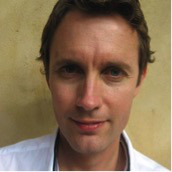
Tom Butler-Bowdon
Tom Butler-Bowdon is the author of 50 POLITICS CLASSICS: Freedom, Equality, Power (Nicholas Brealey, 2015). His ‘50 Classics books’ covering the great writings in Psychology, Philosophy and Spirituality have sold over 300,000 copies and are published in 24 languages. Tom was educated at the University of Sydney and the London School of Economics. He lives in Oxford, UK.





September 27, 2015
Banned Books Month Guest Post from Julie Reece: Into the Fire
“We need not to be let alone. We need to be really bothered once in a while. How long is it since you were really bothered? About something important, about something real?”
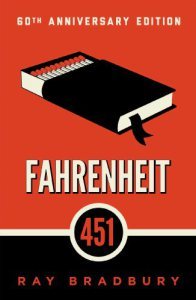
Simon & Schuster, Reprint Edition, June 2013.
The above quote from Ray Bradbury’s novel FAHRENHEIT 451 creates a futuristic American society that outlaws books and pays “firemen” to burn any that are found. In one scene, a woman is caught with books in her home and instead of leaving, she lights the match that consumes her life along with her beloved library. A fireman watching the inferno from outside says, “There must be something in books, something we can’t imagine, to make a woman stay in a burning house; there must be something there. You don’t stay for nothing.”
Have you ever wondered what drives the human psyche, en masse, to get so worked up over books? In this day and age, I think most will agree nearly anything is accessible, but not everything is beneficial. Those with authority bear a heavy responsibility to ensure that literature and art remain age appropriate. So assuming the majority strive to make good and fair choices that affect so many, what constitutes an abuse of power?
I recently read THE BOOK THIEF. There’s a scene where soldiers pile books in stacks eight feet tall in the middle of a wet, cobblestone street and set them on fire. The heroine in the story plucks a smoldering volume from the stack and pops it inside her coat. Rescue. Salvation for the tome.
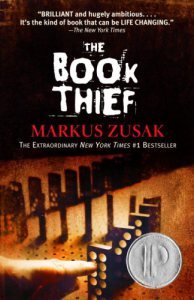
Alfre A. Knopf, Reprint Edition, September 2007.
Though this event occurs in a young adult novel, and more recently, captured in dramatic style on film, the burning actually happened prior to World War II. The German Student Union called for a nationwide action of literary purge or “cleansing” by fire. On 10 May 1933, over 25,000 volumes of “un-German” books were burned.
Think about that. If you burn something, you’re making quite a statement, aren’t you? Judy Blume said, “It’s not just the books under fire now that worry me. It is the books that will never be written. The books that will never be read. And all due to the fear of censorship. As always, young readers will be the real losers.”
If we consider the past, this idea of censorship often leads to a state of fear in society. Whenever a group or individual dogmatically controls the choices of those around them, the climate becomes oppressive, and creative thought and deed smothered. The fascism of Nazi Germany is a road we don’t want to tread again, and censorship is a form of stifling freedom. Though banning literature may make the ones in charge feel their environment, their ideals, their morality, and the people they care for are safe—here’s the thing—it’s a lie. When people lose their freedom, they tend to rebel making the social climate less stable than before.
America was built on blending different cultures, experiences, and history. And we’re only made stronger for our diversity, wouldn’t you agree? So, what lies at the root of an issue when it stirs people to mass hysteria? What is there to be so afraid of?
I’m no expert, but here’s something to consider. Maybe ideas that differ from our own just scare the crud out of us.
There’s arrogance in leaders who want absolute control. “I know better than you. So, you can’t read this…” Instead, let’s look to examples like Dwight D. Eisenhower who said, “Don’t join the book burners … Don’t be afraid to go in your library and read every book.”
Then there are those in charge that disguise their fear as caring, “I’m afraid your free will may hurt you, so don’t read that …” Supreme Court Justice Potter Stewart says, “Censorship reflects a society’s lack of confidence in itself. It is a hallmark of an authoritarian regime …”
Right! Teach kids well, expose them to truth, and then trust them to make good choices.
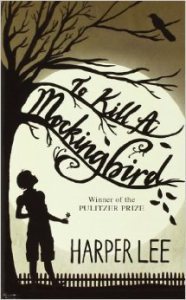
Grand Central Publishing, Reprint Edition, October 1988.
Let’s not forget that it’s a good thing to think for ourselves! It’s perfectly okay to consider both sides of an idea. Investigate, discuss, and then decide or confirm what you believe, not because someone tells you to, but because you’ve made an informed choice that now belongs to you.
Perhaps those who ban books out of fear are missing the bigger picture. Harper Lee’s book TO KILL A MOCKINGBIRD was banned because of its depiction of how blacks are treated by members of a racist white community, yet the book condemns such behavior. HARRY POTTER by J.K. Rowling was banned because opponents believe it promotes the occult and Satanism, yet a boy pays the ultimate sacrifice and unselfishly lays down his life to save his friends.
Ideas pave the road to discovery. Literature is supposed to inspire, excite, and spur us to deeper intellectual discussion. So instead of sitting around a book bonfire, what if we try a round table approach instead? Allow supervised dialogue to occur in the classroom where unique, independent views are shared and explored. Kids are smart. Adults who understand and respect that are listened to more than they know.
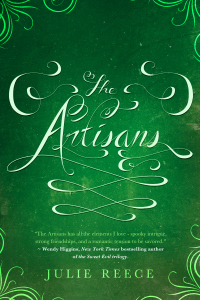
Month9Books, May 2015.
The point in opening dialogue is not to win a debate or bully someone into agreeing with our position. It’s to raise questions, find answers, and promote greater understanding of the world and its complexities beyond what we could ever experience on our own. Let the questions born from those discussions then be taken home to the family living room where we find wisdom and balance with those we trust most.
While we can’t always agree, perhaps we will leave the classroom with greater knowledge, compassion, and true tolerance than when we entered into it. Every day, we make judgments about something and whether it’s right or wrong for us. That’s very different than judging someone, or tyrannically stating if something’s not right for me, then it can’t be right for anyone else.
Joseph Brodsky said, “There are worse crimes than burning books. One of them is not reading them.”
How long has it been since we were really bothered? About something important, about something real? This country was created on the ideals of freedom. We the people, you know? And if we won’t hear any voice but our own, then we’re as guilty of being fire-starters as they.
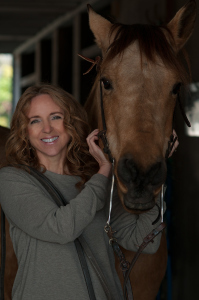
Julie Reece.
Julie Reece is the author of THE ARTISANS (Month9Books 2015) a YA Gothic retelling novel and sequel THE PALADINS scheduled for release in Spring 2016. is a self-proclaimed animal enthusiast, movie fanatic, and amateur painter. She lives in the Metro Atlanta area with her family, cats, and horses.
Twitter: @JulieAReece
Facebook: https://www.facebook.com/author.julieareece
Goodreads: https://www.goodreads.com/author/show/5294594.Julie_Reece
Instagram: https://instagram.com/julie.reece/
Pinterest: https://www.pinterest.com/julieareece/





September 26, 2015
Banned Books Month Guest Post from Ashley Hope Pérez: The Writing Process, Uncensored
I’ve met authors who proudly describe their fiction as “clean” YA. This has always baffled me. I don’t understand what “clean” means except that maybe the writer has taken pains to minimize the possibility of offending anyone.
This much is certain: I am not one of these writers.
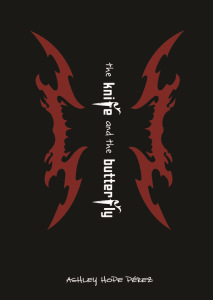
Carorhoda LAB, February 2012.
With my YA novels, I entrust difficult stories to smart, thoughtful readers, most of whom happen to be teenagers. I do not think about librarians, administrators, parents, or any other gatekeepers that might stand between my books and my readers. From time to time, I do think about the students I used to teach in Houston and the stories they were hungry for. I think about how to help them develop new appetites, think about their world in new ways, and encounter new possibilities and experiences.
So I’m not indifferent to what people think. But writing is, for me, a process of discovery, and there’s simply no room in this process for worries over hypothetical judgments by hypothetical PTA members who might hypothetically read and condemn (or condemn without reading) my books. For the most part, when I write, I train my attention on the story I’m telling and the world that it unfolds in. I try to understand that world by writing my way into imagined hearts and minds. That means writing the scenes that belong in my narrative even when it entails going places I’d rather not. And I know the reading can be difficult, too.
My first novel was largely inspired by the stories my students shared with me when I was teaching in Houston, and I had to think carefully about how I would frame the complex realities I was refracting through my fiction. I wanted to do justice both to the difficulty of those realities and to my students’ resilience in facing them. For some, Marisa’s struggles seem unbelievably grim; for others, they are painfully close to home.
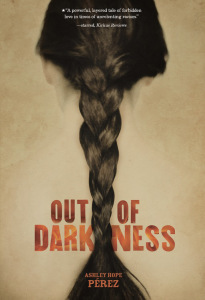
Carorhoda LAB, September 2015.
My second novel, THE KNIFE AND THE BUTTERFLY, responds to a deadly gang fight and seeks to counter a courtroom narrative that essentially framed young men like the novel’s speaker as waste, as disposable persons. In that undertaking, I weighed the risk of dramatizing violence against my desire to humanize and particularize the lives of marginal youth. Rather than redeem the callousness of my characters, I wanted to position them in a set of circumstances that might give them room to redeem themselves.
My latest novel, OUT OF DARKNESS, takes the 1937 New London, Texas, school explosion as the backdrop for a secret romance between an African American boy and a Mexican American girl. It’s a book about segregation, love, family, and the forces that destroy people. Reviewers described it as “moving,” “powerful,” and “elegant,” but they also used words like “grim,” “tragic,” and “agonizing.” For Kelly Jensen, it’s a “gut punch” of a novel; Elizabeth Wein called it “absolutely stunning” but warned that “anyone who dares read this … will end up in about six billion numb and tiny pieces.”
It’s clear, then, I’m not writing about ponies, the love of country, or backyard barbeque romance. That will inevitably be a mark against me for adults like Megan Cox Gurdon, whose now infamous essay, “Darkness Too Visible,” characterized writers of moderately mature YA as “bulldoz[ing] coarseness or misery” into children’s lives. If you listen to Cox Gurdon and her ilk, you get the impression that YA authors are an irresponsible lot. Nothing could be farther from the truth. It’s just that fulfilling Cox Gurdon’s vision for YA is not among our responsibilities.
I believe I’m responsible for each word I write. I also believe that writing ultimately means making choices without knowing for sure what the consequences will be, both in terms of what people may say and in the more basic fact that what we intend to accomplish in language can never be coextensive with what we actually write. This is not a problem of novices; it is a core dimension of what it means to create from language. Words can mean less, more, and differently than we intend, activating networks of possibilities that we cannot anticipate from the outset. If we are responsible to others for what we write, I think that we are also responsible for nurturing these possibilities.
There’s a weightiness to crafting a work, not just in some direction or in some way, but in response to what makes it unique. Most of my writing happens through rewriting, and my ultimate goal is to make the work more like itself. This does not necessarily mean making the writing prettier or smoother, more eloquent or more pleasing. I stress that point because sometimes I’m asked, “Ashley, for once, couldn’t you write something happy?” or “Did it have to end this way?” In the case of OUT OF DARKNESS, which ends with a different kind of tragedy from the one that opens the action, I fought for some time against the grain of the narrative, trying to evade tragedy and deliver my characters into safety. But it turned out to be a novel about narrating disaster to the end, and the narrative kept on pressing its case, ultimately demanding that I respond to its particularity.
Similarly, in THE KNIFE AND THE BUTTERFLY, many of the thematic threads in the novel grew out of what might have seemed, on the surface, a kind of coarseness. (Megan Cox Gurdon would surely have thought so.) I’ll offer you a quick example to show you what I mean. The speaker of THE KNIFE AND THE BUTTERFLY is 15, a dropout, and homeless. In this passage, Azael has gone back to the apartment complex where he lived before his father was deported. This is how he sees that place:
The Bel-Lindo was bad parents and crackheads, dog shit and dirt for lawns, and pissed-off fools everywhere, but it was still home. There were things I liked, too. Like Jorge Ledesma’s grandma praying the rosary out on the balcony to beat the heat. Or the soccer games with the little guys on the patchy courtyards between buildings. And nowhere else in Houston could you find Mrs. Guzman selling calling cards and Coronas and spicy-as-fuck Cheetos right out of her living room window.
This was among the first passages I drafted for THE KNIFE AND THE BUTTERFLY. As I was trying to understand what the novel would be, I kept returning to the way that, for Azael, the ugly sides of his reality are fused to a kind of beauty, the knife connected to the butterfly. His description of Cheetos as “spicy as fuck” is as much a part of this world as the physical images of what surrounds him. Which is to say, first, that I wouldn’t countenance excising that “fuck” for anything, and certainly not to avoid offending the gatekeepers. And, second, if a work achieves lyricism, I want it to be a lyricism proper to it, just as I want the drama of what I write to be the drama proper to the text, its pathos the pathos that it earns.
All of that to say: even when my work offends, I’m proud to take responsibility for it. I won’t apologize for rendering the worlds of my books with all the beauty, grit, and humanity that their pages can contain.
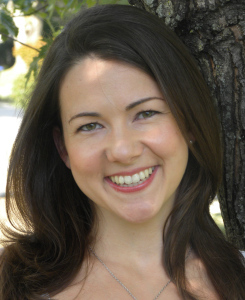
Ashley Hope Pérez.
Ashley Hope Pérez is the author of three YA novels. Her latest, OUT OF DARKNESS, earned starred reviews from Kirkus and School Library Journal. Both WHAT CAN’T WAIT and THE KNIFE AND THE BUTTERFLY appear on numerous reading lists, including YALSA’s Best Fiction for Young Adults. Ashley also has a PhD in comparative literature. She is currently faculty at The Ohio State University where she teaches topics that range from global youth narratives to Latin American and Latina/o fiction. She lives in Columbus, Ohio, with her husband and their sons. Visit her online at http://www.ashleyperez.com/ or find her on Twitter at @ashleyhopeperez.





Banned Book Month Guest Post from Liniers: On Dangerous-Sounding Books
I was, what, fourteen, fifteen? Kevin Bacon had moved into a new town. He didn’t have any friends. He had Sting’s hair. And he sure liked to dance. Especially if he was really angry. He’d go into a dramatically lit barn and dance out his anger like an intense Tasmanian Devil. Anyway. Why was he so angry? They didn’t want him and Michael Penn to organize a dance. Dancing was illegal! I’d be angry too. Marty McFly didn’t have this problem with the Enchantment under the Sea Dance. And that was around the McCarthy era of the fifties. I was confused “What’s wrong with these people?” I thought to myself. “What kind of crazy movie is this? Also… Who is this Kurt Vonnegut whose book has parents of this kooky town, especially that pompous, Bible thumping John Lithgow, all riled up? Did they say SLAUGHTERHOUSE FIVE? That sounds like a horror book.”
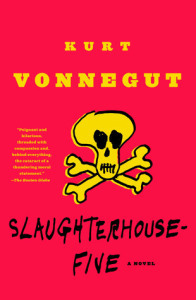
Dell, Reprint Edition, 1991.
In the early eighties, Argentina was coming out of a bloody dictatorship and we were fed up with banning in general. It was the time of no English music on the radios, banning a whole language. How could we want to listen to Queen if we were at war with England?
And some books just make people think a little too much about things. I remember some old curmudgeon on TV saying that universities were for learning, not thinking.
Too much thinking provokes subversive states of mind, which in turn lead inevitably to terrorism.
Thinking too much…
But those terrifying days were gone. The warped minds behind a systematic agenda for disappearing people (and thought) from our country were standing trial. We were living in a brand new democracy. We could listen to Queen if we wanted to. We had broken free. We were ready Freddie. We where the champions of the world. And this literally came about in the World cup of 86.
Even more confusion on my part as I wondered “So what’s going on in this town? They are burning books?” Wasn’t the USA a strong democracy? Why were they burning books in this movie? “And what the fuck is wrong with dancing?”
I decided I should get my hands on this SLAUGHTERHOUSE FIVE book. I would definitely impress people with my dangerous intellectual prowess. Probably my sisters pretty friends would think:
”Who is this dangerous guy reading these dangerous books”… (Sadly, that never happened.)
I went to my parents bookshelves and searched for Vonnegut. Nope. Nevermind. I would find another dangerous sounding book.
And so it began: I went from J. D. Salinger to Henry Miller. From García Marquez to Kerouac. From Kafka to Borges. My parents had some pretty decent books. Some were hard to get into. Others I could’t put down.
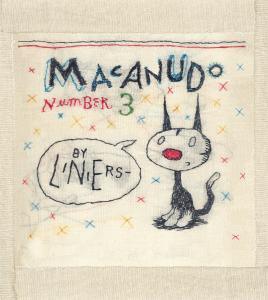
Enchanted Lion Books, October 2015.
I remember a teacher asking “What are you reading there, Siri?” And when she saw it was Tropic of Cancer she gave me this worried look that made me feel like Marlon Brando in The Wild Ones.
Still, SLAUGHTERHOUSE FIVE was nowhere to be found in my parents house or in Argentine bookstores.
My parents traveled to the US when the eighties where about to come to their wall topling end. I asked them to bring me two books Art Spiegelman’s MAUS and Kurt Vonnegut’s SLAUGHTERHOUSE FIVE.
I remember getting these books when they came back. Running to my bedroom. I kicked off my Sunday shoes. And began reading.
Everybody cut footloose!
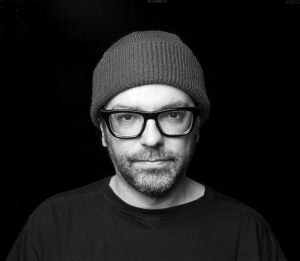
Liniers. Photo by Nora Lezano.
Ricardo “Liniers” Siri is an Argentine cartoonist who is beloved in Latin America for his wildly successful decade-long comic strip MACANUDO, published in the prestigious Buenos Aires newspaper La Nación, and for his colorful, on-stage concert collaborations with Grammy-nominated musician Kevin Johansen. His MACANUDO strip has won him fans throughout the world as well as hundreds of thousands of fans on Facebook, Instagram, and Twitter. It has also won him comparisons to the cartoonist heavyweights Charles Schultz and Bill Watterson. An artist with one foot in cartooning and the other in illustration, Liniers exists at the crossroads where commentary, politics, culture and comics come together. And like all of the great cartoonists of the past, his work is informed by historic and literary references, from Narnia and Lewis Carroll to Maus and even Stephen Colbert.
Liniers has also created outstanding picture books for TOON Books, with Françoise Mouly. When TOON published THE BIG WET BALLOON in 2013 he was virtually unknown in the United States. Since then, he’s made his mark with the publication of the first volumes of his MACANUDO (which means cool, neat, nice) series, discovered and published by Enchanted Lion, with wonderful translations by Mara Lethem, and has landed three New Yorker Magazine covers as well: “Straphangers”, “The Elephant in the Room” and “Hipster Stole.”
For someone with no name recognition in the US just a couple of years ago, there is now a lot of buzz and excitement around his fresh and innovative work. One of the most compelling aspects of his work is that he is not detached. He takes the world as it is as his material, but instead of being cool and ironic in the face of it, he remains curious and open.
He started to publish MACANUDO in La Nacíon early in the 21st century, when political and daily life in Argentina were terrible and the prevailing attitude was very pessimistic. Instead of focusing on the big picture, which was awful, he decided to focus his strip on the little things––the teeny, tiny good things that are always there, but get lost in the big picture.
Liniers travels with a notebook and his watercolors and writes and draws no matter where he is. And those of us who know him have all seen it: the brush dipping into the glass of tap water as continues to eat and drink, drawing and responding to the world around him all the while.
Liniers has created well over 3,600 published comic strips, has published over twenty-five books in Spanish, and has published more than ten books in nine countries, from Brazil to France, Italy, and the Czech Republic. His first book to be published in English, THE BIG WET BALLOON has been both a critical and popular success was nominated for an Eisner award and was selected as a best book of 2013 by Parents Magazine. His MACANUDO volumes have also received starred reviews and nominations. Moreover, the fourth volume of to appear in French was recently selected for the 2014 Angouléme Festival. Together with his wife Angie, Liniers also founded the comics publisher La Editorial Común, which publishes Latin American comics and Spanish translations of European and American comics. Liniers lives in Buenos Aires with his wife and three daughters––Matilda, Clementina, and Emma… No penguins though…Yet.
MACANUDO #3 (Enchanted Lion) and WRITTEN AND DRAWN BY HENRIETTA (TOON) will both be published in October 2015.







